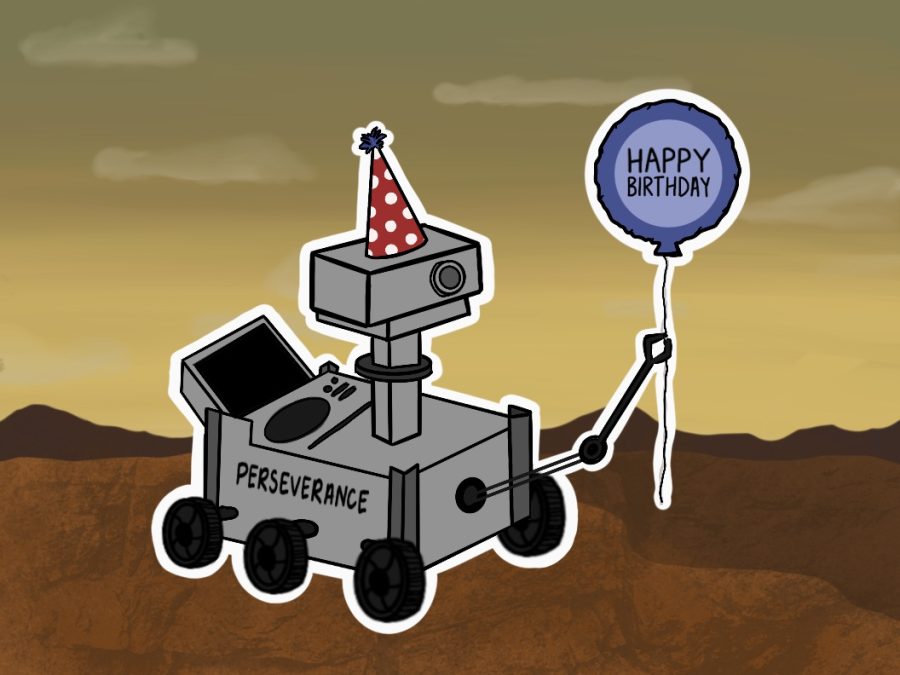NASA celebrates one-year anniversary of Perseverance rover landing
February 26, 2022
The NASA Perseverance rover celebrated its one-year anniversary since making its historic landing on the surface of Mars last winter.
In 2021, NASA took a massive step in its exploration of mars. Only this time, there were no astronauts, just a robotic emblem of human curiosity ready to explore, much like its predecessor, the ‘car–sized’ Curiosity Mars rover.
A wanderer, an explorer, a non-human scientist, a researcher — arguably an archaeologist — or more realistically, the right hand of the scientists and engineers that brought all these elements together into a single rover: Perseverance.
NASA launched its Perseverance rover on the Atlas 5 rocket in July 2020, prepared for a seven month, 292 million mile journey from Earth.
It landed seven months later, on Feb. 18, but not before inciting the infamous “seven minutes of terror”— a term coined by NASA’s Jet Propulsion Laboratory, or JPL.
In those seven minutes, the rover basically lands itself, and while NASA scientists cannot intercede on its behalf, they command its entry, descent and landing.
It is the defining moment where a plethora of things could go wrong, and NASA doesn’t receive any data in that time since it takes 11 minutes for the rover to send messages back to Earth. The rover, however, sends “heartbeat tones” to tell the NASA team that “it’s healthy.”
Despite NASA’s meticulous planning and designing coming down to this single moment, the seven minutes of terror ended with joy, satisfaction and a huge sense of relief. It was over and Perseverance proved itself even more worthy of its name: the rover had officially landed on Mars.
It has been a year since Perseverance landed on the Jezero Crater, which scientists believe was home to a lake 3.95 billion years ago. The Perseverance mission’s goal is to search for evidence of life that could have existed on Mars.
This mission involves the rover collecting rock and dirt samples to return to Earth for examination. The rover’s achievements in its first year include driving a record-breaking distance on Mars in a single day and successfully collecting and drilling rocks. It also tested the first prototype oxygen generator on the planet.
Perseverance is pivotal for NASA’s Moon to Mars exploration approach, which features the upcoming Artemis mission that would land people on the moon almost 50 years after the Apollo 17 mission.
While NASA has its sights set on the moon with the upcoming Artemis program, the continued successof Perseverance is crucial for the understanding of Mars’ history and plans for its future.







Sabi • Feb 28, 2022 at 12:51 pm
Well written article – adored the emphasis on the bot’s manner of communication via heartbeat sounds!
Ogbitse Eweye • Feb 26, 2022 at 9:44 pm
I enjoyed this read!!!